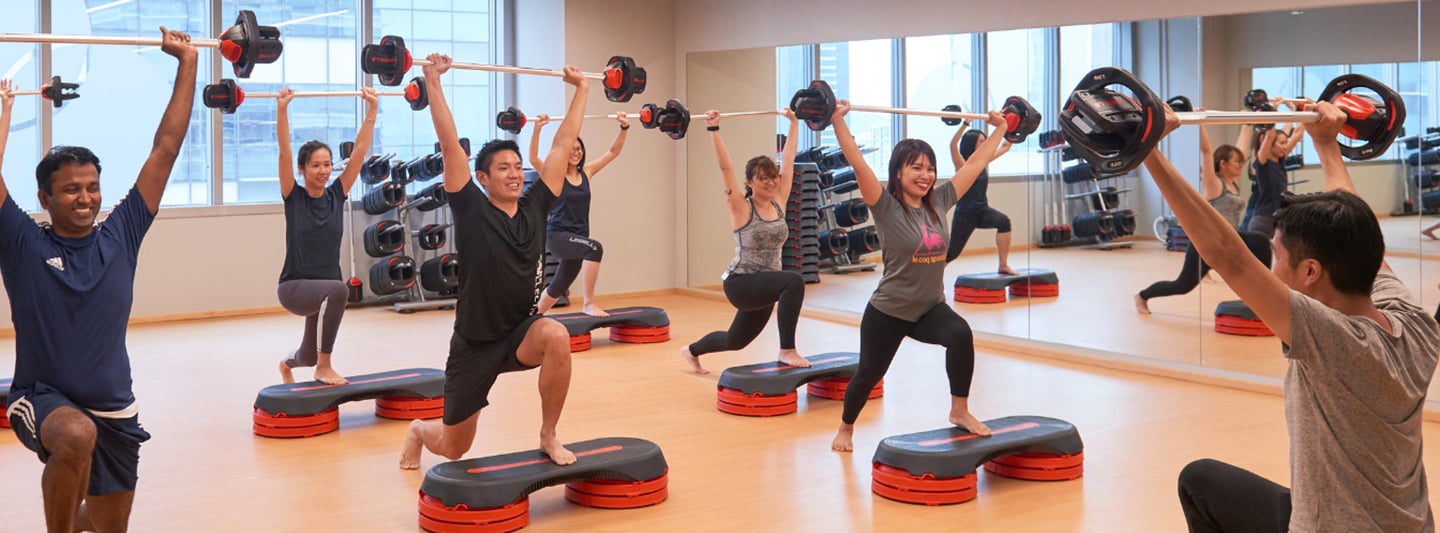Many myths and misconceptions about sports injuries can lead to ineffective treatment and harmful prolonged recovery. It's essential to separate fact from fiction to ensure you take the best care of your body. Here, Dr Gen Foo from Apex Sports Clinic debunks some common myths about sports injuries and provide insights into proper injury management. Throughout his career, he has worked alongside numerous international athletes to get through their injuries. Beyond the operating theatre, Dr Foo is also dedicated to 'running the talk' by continuing to compete in running and multi-sports events. Having personal experiences with sports-related injuries, he can relate to injured athletes trying to return to their sports. Time to dispel those myths about sports injuries with the expert.
Myth 1: Stretching Can Prevent All Injuries

Hypermobile individuals may already have a range of motion that exceeds normal limits, making their joints more susceptible to dislocation and other injuries.
Fact: While stretching is an important part of a workout to improve flexibility and reduce the risk of certain injuries, it is not a cure-all. Overstretching, especially for hypermobile (excessively flexible) individuals, can lead to further injury. Hypermobile individuals may already have a range of motion that exceeds normal limits, making their joints more susceptible to dislocation and other injuries. For these individuals, additional stretching can exacerbate their condition.
Moreover, some injuries, such as ligament or muscle tears, can worsen with stretching. Instead of alleviating the problem, stretching a torn ligament or muscle can increase pain and damage. Therefore, it is crucial to seek medical advice to get a correct diagnosis before starting any stretching routine.
Myth 2: Persistent Pain Can Be Ignored
.png?width=1200&height=628&name=blog_Sports%20Doctor%20Debunks%20Myths%20About%20Sports%20Injuries%20(2).png)
Pain is your body’s way of signalling that something isn’t right.
Fact: Some aches and pains after a hard workout are normal. However, persistent pain is a sign that something might be wrong. Many athletes and fitness enthusiasts try to “run off" the pain, believing it will disappear with more exercise. This approach can lead to more severe injuries, as it may worsen underlying issues.
Pain is your body’s way of signalling that something isn’t right. Ignoring it can lead to chronic injuries that are much harder to treat. If you experience persistent pain, take a break from intense training and monitor your symptoms. If the pain continues, it’s important to consult a medical professional to diagnose and treat the problem appropriately.
Myth 3: No Pain, No Gain
Fact: The phrase "no pain, no gain" is one of the most pervasive myths in the fitness world. While some discomfort can be a part of pushing your limits and improving performance, pain is often a sign of injury. Training through significant pain can lead to serious injuries and long-term damage. It’s crucial to differentiate between the normal discomfort of a challenging workout and pain that signals something is wrong. Listening to your body and knowing when to rest is essential for sustainable fitness and health.
Myth 4: Rest is the Best Cure for All Injuries
Fact: While rest is critical for recovery from many injuries, complete inactivity can sometimes do more harm than good. Controlled, gentle movements and physical therapy can promote healing and prevent stiffness for certain injuries. The key is to find a balance between rest and rehabilitation exercises that can aid recovery without causing further damage. Consulting a healthcare professional can help determine the best approach based on the specific injury.
Myth 5: You Should Always Ice an Injury
.png?width=1200&height=628&name=blog_Sports%20Doctor%20Debunks%20Myths%20About%20Sports%20Injuries%20(4).png)
As with all else, there is no one solution-fix-all method.
Fact: The traditional advice to "ice an injury" is not always appropriate. While ice can help reduce swelling and numb pain immediately after an acute injury, it’s unsuitable for all types of injuries or at all stages of recovery. Heat might be more beneficial for chronic injuries to improve blood flow and relax muscles. Moreover, excessive icing can delay healing by constricting blood vessels and reducing the necessary inflammation response. It’s important to understand when and how to use ice and heat correctly, often best guided by a healthcare professional.
Myth 6: If You Can Move It, It’s Not Broken
Fact: This is a dangerous myth that can lead to the neglect of serious injuries. It is possible to move a body part even if fractured or broken. For example, hairline fractures or certain types of stress fractures can still allow for some movement without immediate, severe pain. Relying solely on the ability to move as an indicator of the severity of an injury can result in improper treatment and complications. A medical professional should evaluate any suspected fracture or significant injury to ensure proper care.
Myth 7: You Can Always Self-Diagnose and Treat Your Injuries
Fact: While some minor injuries can be managed at home, self-diagnosis and treatment often lead to improper care. Symptoms of different injuries can overlap, making it difficult to identify the problem accurately without professional expertise. Misdiagnosing an injury can lead to inadequate treatment and prolong recovery or worsen the condition. It’s always best to seek medical advice for persistent or severe injuries to ensure an accurate diagnosis and appropriate treatment plan.
.png?width=1200&height=628&name=blog_Sports%20Doctor%20Debunks%20Myths%20About%20Sports%20Injuries%20(6).png) When in doubt, it is always best to seek professinal medical advice.
When in doubt, it is always best to seek professinal medical advice.
Importance of Proper Diagnosis and Treatment
Understanding the truth behind common myths about sports injuries can help you take better care of your body and avoid prolonged recovery periods. Always listen to your body, seek professional advice when necessary, and incorporate a balanced approach to stretching and exercise. Medical professionals can provide accurate diagnoses and recommend appropriate treatments tailored to individual needs. This might include specific exercises to strengthen weak areas, physical therapy, or rest.
Featured Contributor:
![[Hubspot] Thumbnail_core clinic_apex](https://www.corecollective.sg/hs-fs/hubfs/%5BHubspot%5D%20Thumbnail_core%20clinic_apex.png?width=250&height=292&name=%5BHubspot%5D%20Thumbnail_core%20clinic_apex.png)
Apex Sports Clinic
Dr. Foo Gen Lin
Sports & Orthopaedic Surgeon
As passionate athletes, we intimately understand the anguish and frustration that injuries can inflict, and our primary commitment is to facilitate your swift return to the sports you love.
With a collective experience exceeding 15 years, the Apex team has been dedicated advocates for athletes, assisting them in preventing, overcoming, and conquering injuries. We've invested countless hours in rigorous training and education to ensure we are exceptionally equipped to provide you with the highest care and support.
Our practice specialises in both non-surgical and surgical treatments for sports injuries, including knee ligament injuries, shoulder dislocations, and hip labral tears. We also handle emergencies like acute fractures and injuries, along with chronic joint conditions like osteoarthritis. With our experienced medical team and evidence-based approach, we provide personalised care to help patients recover and improve musculoskeletal health.
Connect with Apex Sports Clinic on their website.
Core Collective is home to over 100 fitness, wellness, beauty and lifestyle and medical professionals who can help you live your best life. Book a tour to get started today!

.png)

.png?width=1200&height=628&name=blog_Sports%20Doctor%20Debunks%20Myths%20About%20Sports%20Injuries%20(2).png)
.png?width=1200&height=628&name=blog_Sports%20Doctor%20Debunks%20Myths%20About%20Sports%20Injuries%20(4).png)
.png?width=1200&height=628&name=blog_Sports%20Doctor%20Debunks%20Myths%20About%20Sports%20Injuries%20(6).png)
![[Hubspot] Thumbnail_core clinic_apex](https://www.corecollective.sg/hs-fs/hubfs/%5BHubspot%5D%20Thumbnail_core%20clinic_apex.png?width=250&height=292&name=%5BHubspot%5D%20Thumbnail_core%20clinic_apex.png)